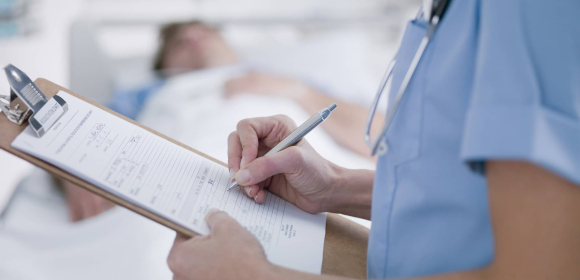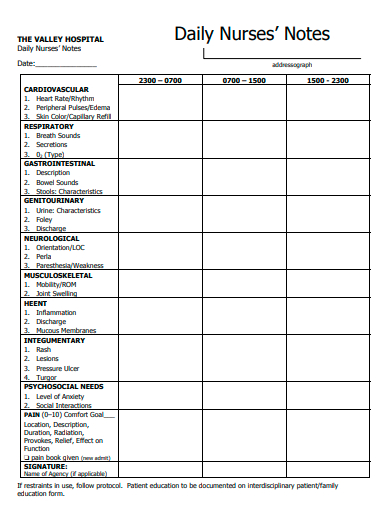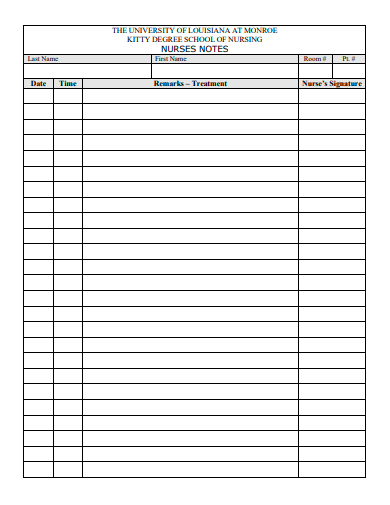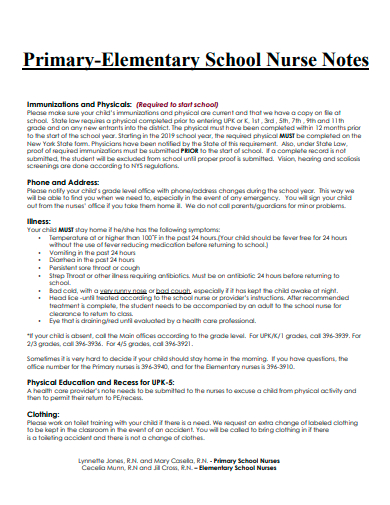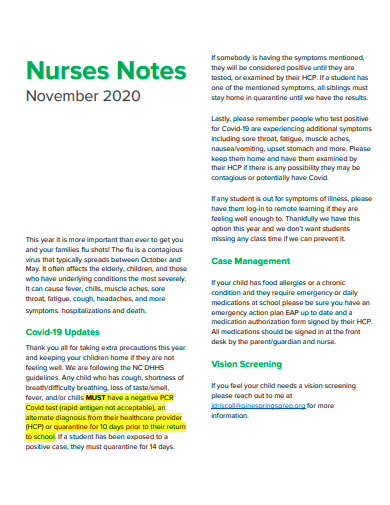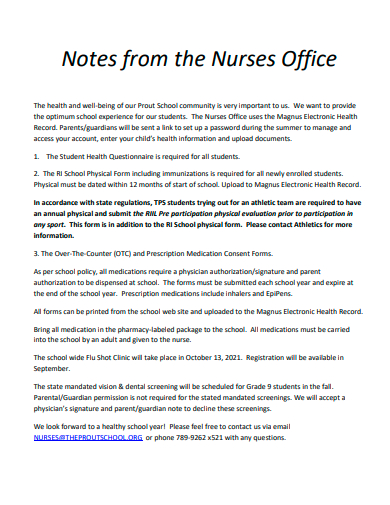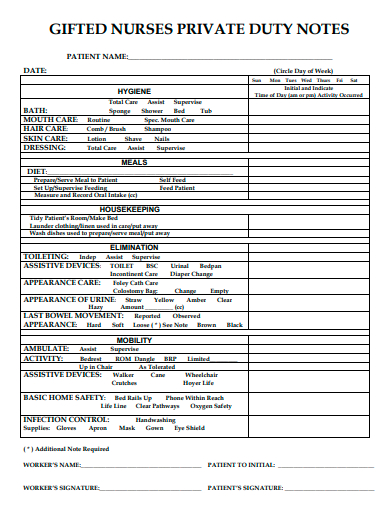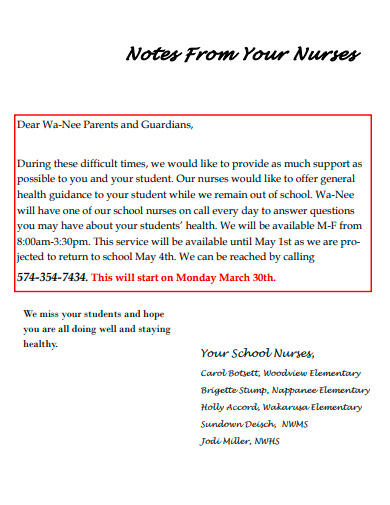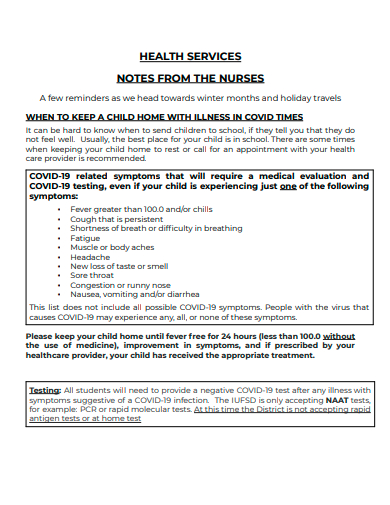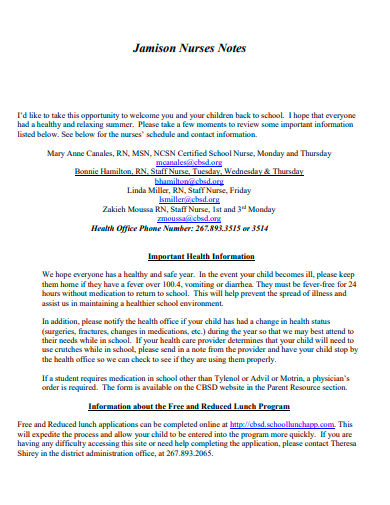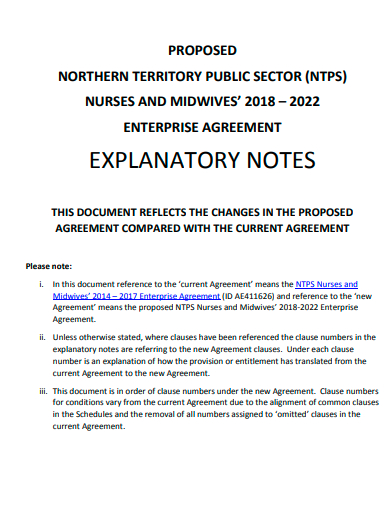You are one of the first to respond to medical incident if you are a nurse practitioner. You must document every interaction you have with patient progress as part of your job responsibilities. Because you are typically the one who prescribes personal medications to patients while working in a hospital, these release notes are of the utmost significance. You need to be familiar with writing nursing note examples that you may pull from whenever you choose.
FREE 10+ Nurses Notes
1. Daily Nurses Notes
2. Basic Nurses Notes
3. Primary Elementary School Nurse Notes
4. Nurses Notes Example
5. Nurses Office Notes
6. Gifted Nurses Private Duty Notes
7. Standard Nurses Notes
8. Health Services Notes From Nurses
9. Formal Nurses Notes
10. Nurses Explanatory Notes
11. Printable Nurses Notes
What Is Nurses Notes?
A nursing note is a document that a nurse writes in a clinical evaluation or health record to capture nursing evaluations accurately, changes in a patient’s condition, a clinical treatment that was provided, and other information that helps the clinical team offer outstanding care. Maintaining a detailed and accurate note is necessary to facilitate effective communication between the medical team and the nurses.
How To Make Nurses Notes?
The nursing note acts as a proof of record between the medical staff and nurses to indicate the progress made in a patient and to guide whoever takes over from the previous working crew of a day. This is done so that the patient can receive the best possible care. Therefore, to get going, you can learn by reading the steps provided below.
Step 1- Explain The Situation
First, provide a concise overview of the situation in the nursing note. Write the opening lines so everyone can understand what the note is trying to address immediately. It is important to begin with the essential components so readers can understand the nature of the notes’ circumstances.
Step 2- Note the Background
The background provides a synopsis of the history of the patient’s disease, including how it first manifested and the treatments that have been tried. The background should include sufficient information to provide the medical staff with the ability to determine the next course of action to pursue.
Step 3- Assessment Section
The assessment section shows where an opinion should be given based on the gathered scientific data. The analysis needs to focus on what took place, including the raw data that was discovered. Following the examination, the clinical evaluation that was performed should be used to formulate recommendations.
Step 4- Recommendations
The clinical assessment would be the basis for any recommendations or actions you, as a nurse, would make. Documenting the treatments given to the patient and the progress made as a result of those treatments is another part of this process.
When Is It Necessary for Nurses to Chart Their Notes?
In an ideal situation, you would jot down a few brief observations during your visit and then elaborate on them as soon as you leave the patient’s room when the information is still new and at the forefront of your mind.
What Should Be Presented in the Notes Taken by Nurses?
It should include the date, time, patient’s name, reason for visiting, and other information.
What Should Not Be Submitted as Part of the Nurse’s Notes?
You should only include the facts rather than express your own opinion in this response.
It is extremely important to keep detailed and accurate notes to maintain effective communication between nurses and the medical staff. However, these charts will be used by the legal team involved in a malpractice case if one is ever filed in the future. Because nurses are responsible for the well-being of multiple patients at once, the formal notes taken on each patient will assist the nurse in recalling the activities and care that occurred throughout the day.
Related Posts
FREE 9+ Clinical SOAP Note Samples [ Pharmacist, Documentation ...
FREE 9+ Sample Subjective Objective Assessment Planning Notes ...
FREE 9+ Inpatient Progress Note Samples [ Psychiatric, Hospital ...
FREE 8+ Nursing Assessment Samples in PDF PPT
FREE 7+ Sample Thank You Note After Interview in PDF MS Word
FREE 6+ Return to Work Note Samples in MS Word PDF
FREE 5+ Nursing Discharge Summary Samples in PDF
FREE 5+ Handover Note Templates in PDF MS Word | Excel
FREE 3+ Intake Progress Note Samples [ Patient, Psychotherapy ...
FREE 15+ SOAP Note Templates in PDF MS Word
FREE 11+ Nursing Care Plan Templates in PDF MS Word
FREE 10+ Nursing Case Study Samples & Templates in MS Word ...
FREE 10+ Hospital Discharge Summary Samples [ Patient, Therapy ...
FREE 8+ Student SOAP Note Samples [ Medical, Pharmacy, Doctor ]
FREE 6+ Sample Dap Note Templates in PDF MS Word
